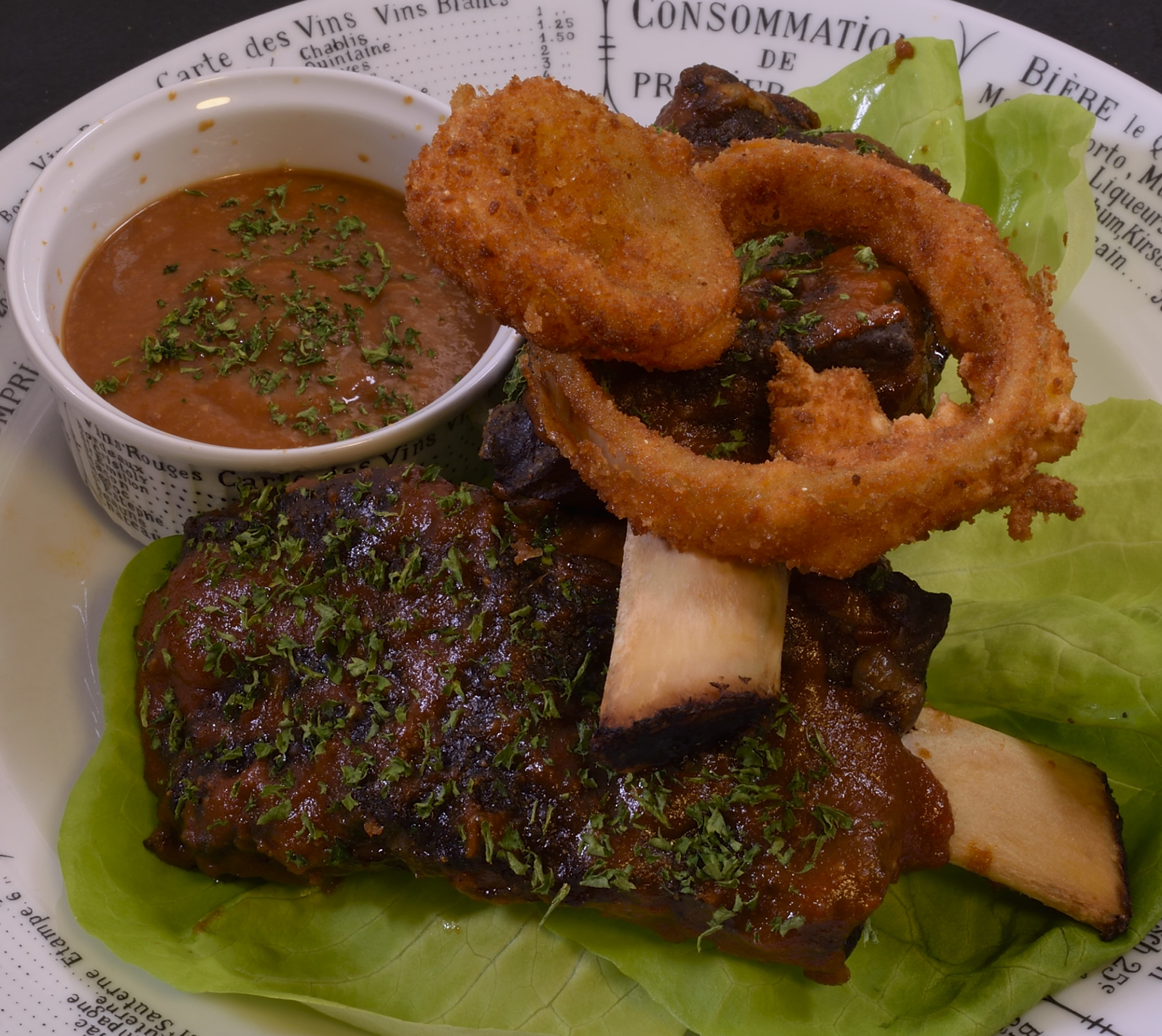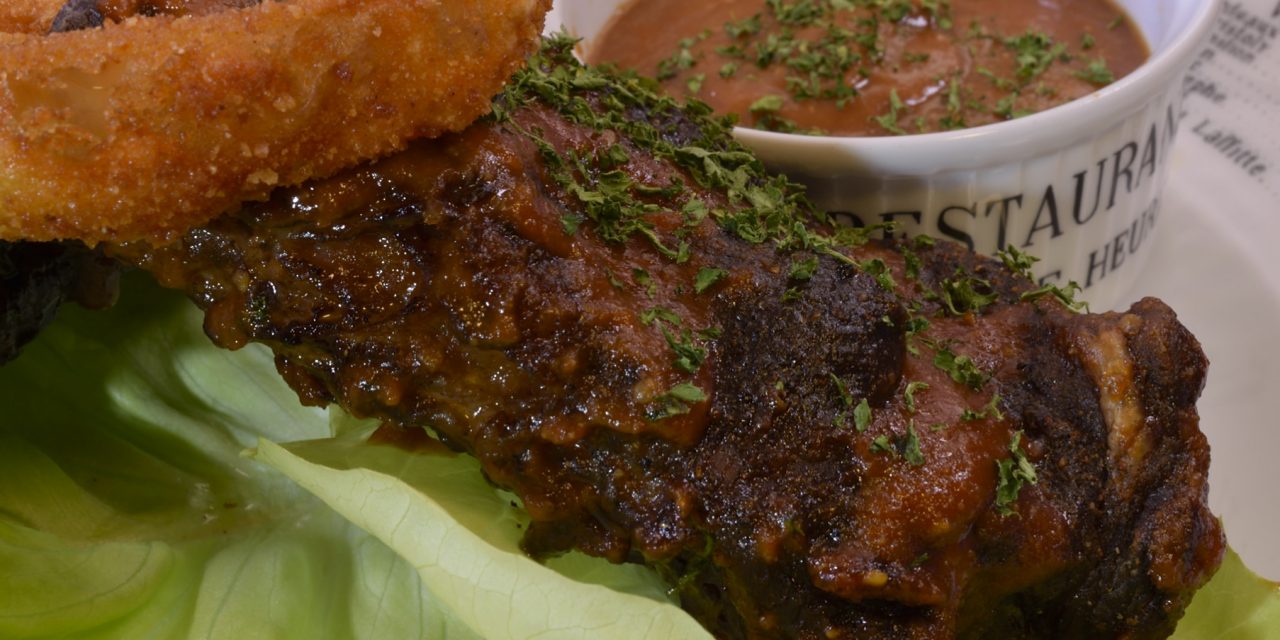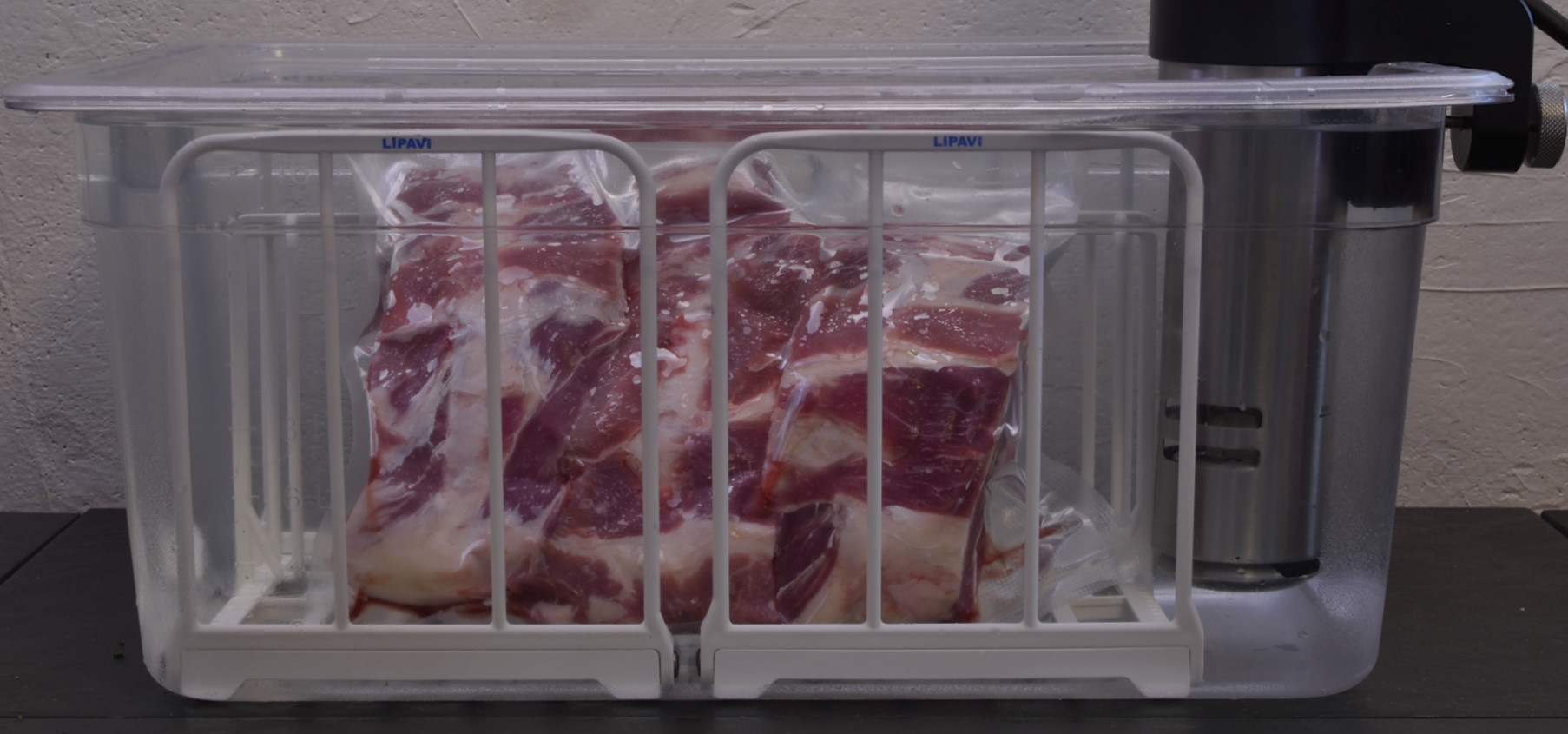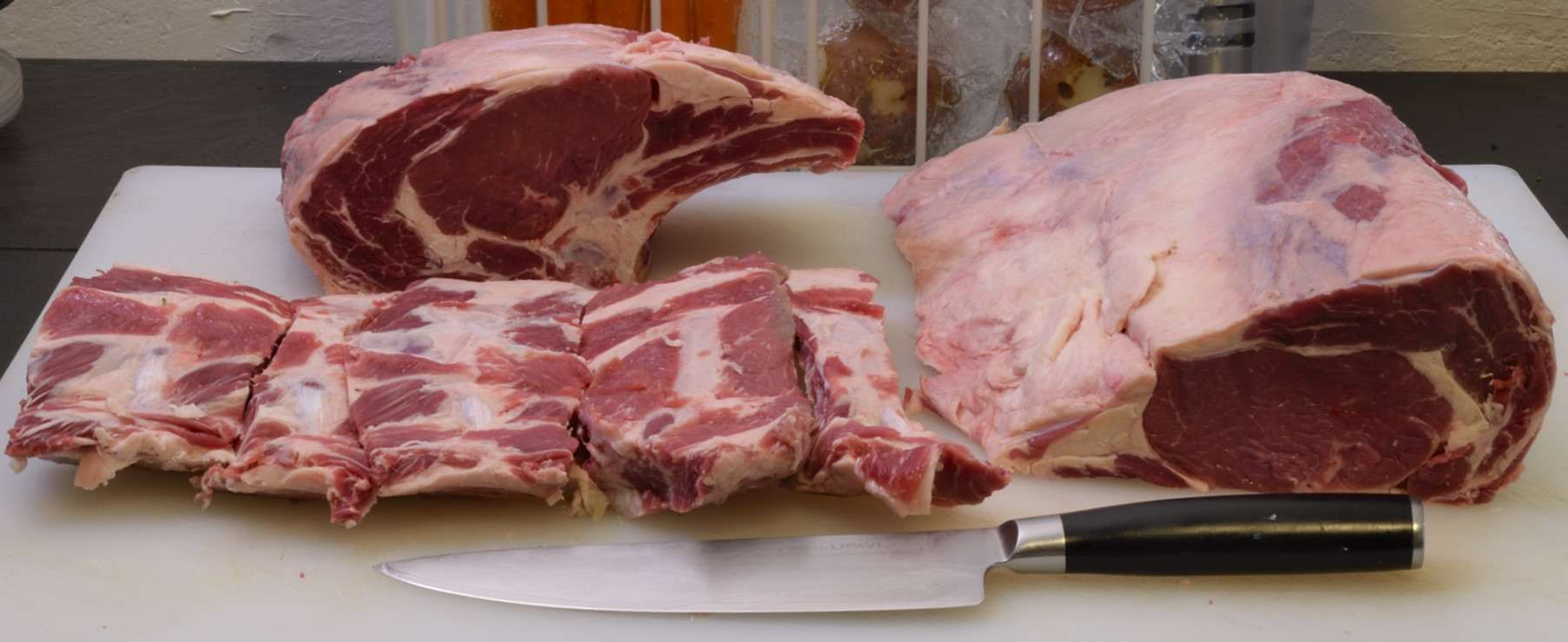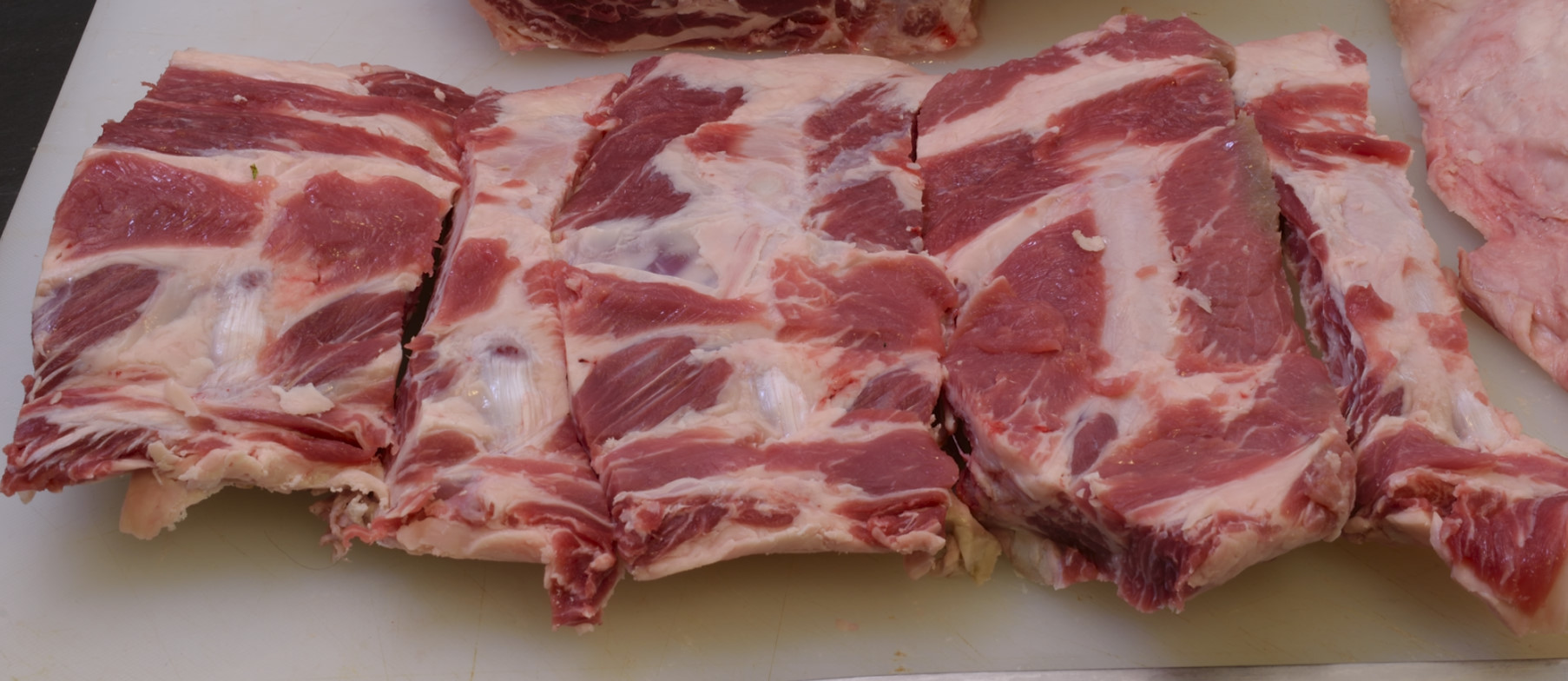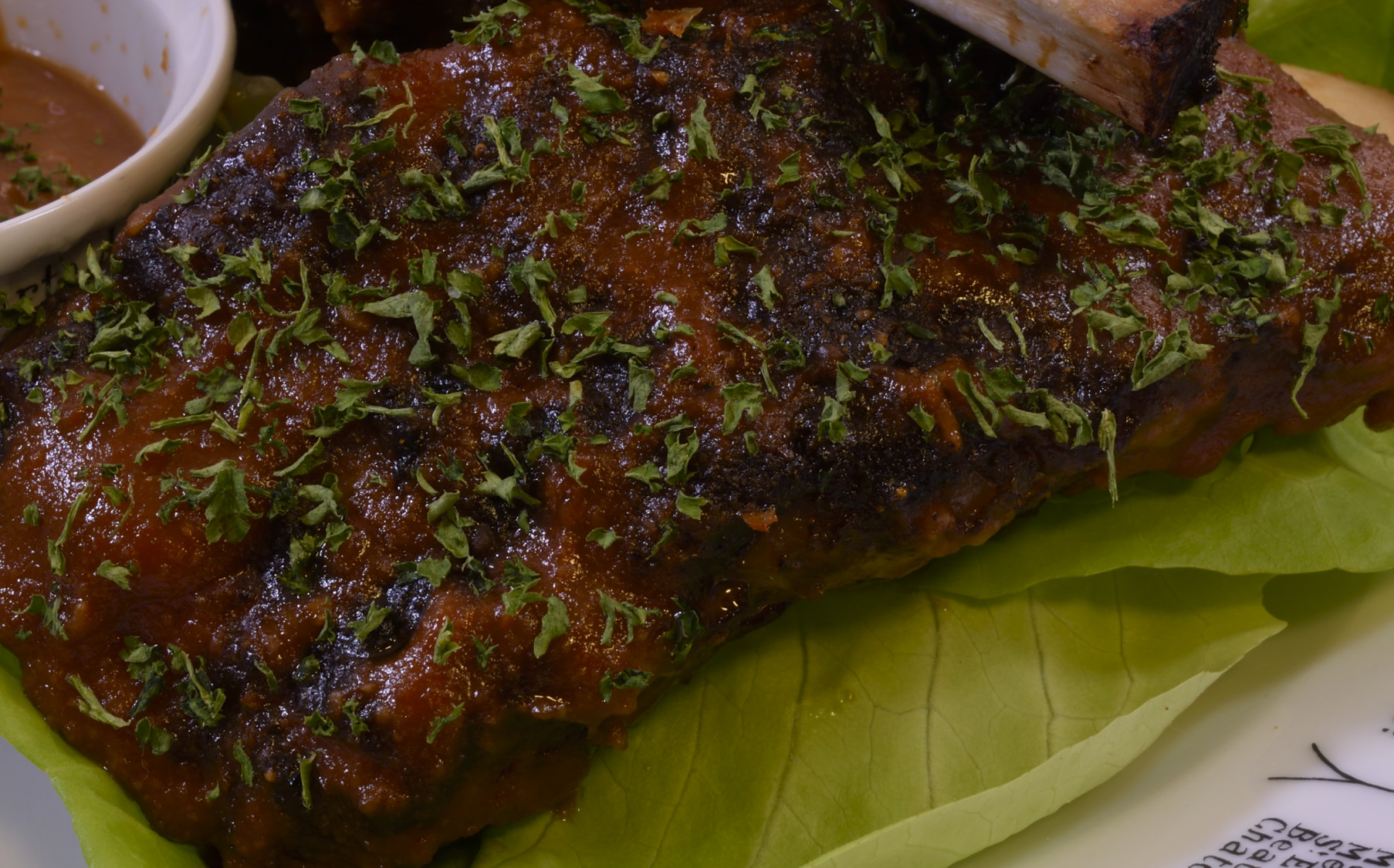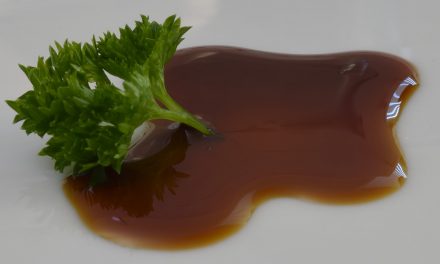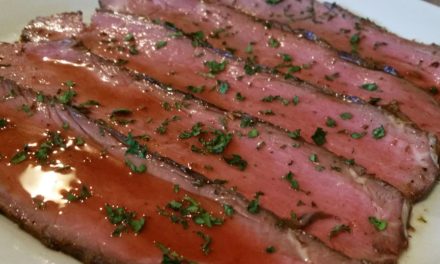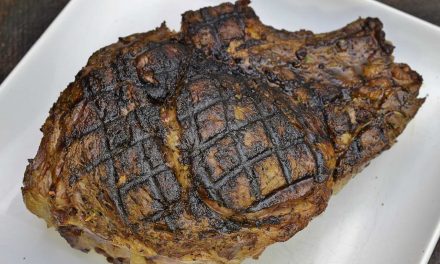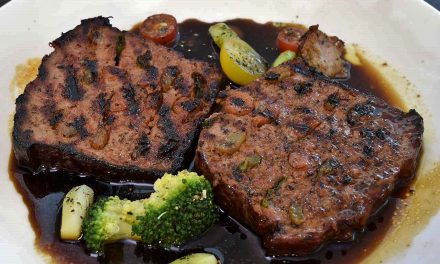The Cooped Up Chronicles
Above: Lipavi C15 container, N15 polycarbonate racks. Lipavi C15L lid.
Many of my readers know that pre-existing mobility issues make it difficult for me to get out much. These days I don’t go out at all. One would think I had more time on my hands than most people. By contrast, I accomplish things much more slowly than I did not so long ago. The only thing worse than slowing down is coming to a full stop. I usually feel like I’m working as hard and as fast as I can, but if the Chef Norm part of me was watching, he would be bemused with my lack of productivity. Years ago I would been forced to fire myself, or at least written myself up. For that matter, that persona probably would never have hired me in the first place.
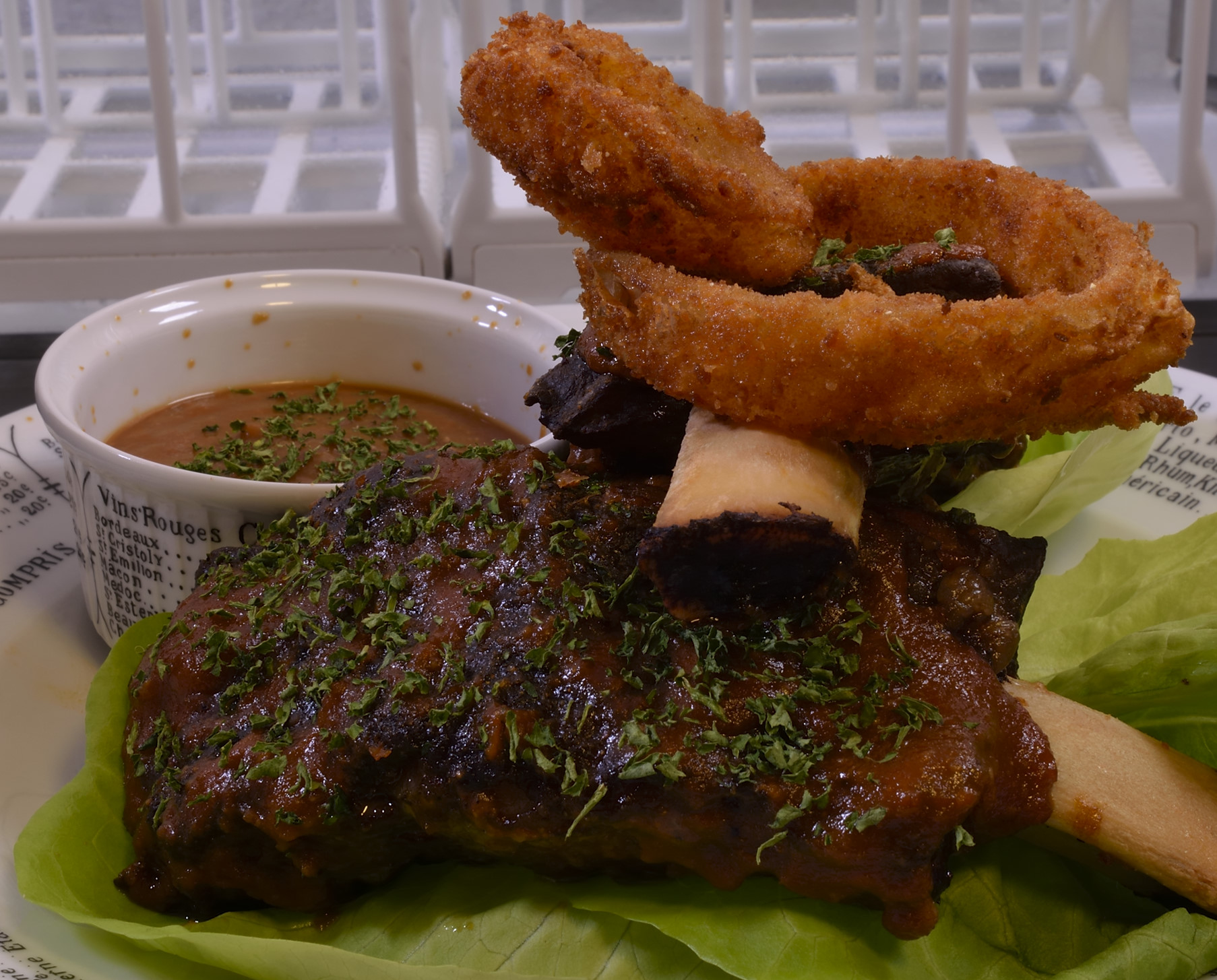
So what do I actually “do” all day? I ride herd on the FB group, but how much time does that take? I cook, but I would be doing that anyway. My office is in the kitchen. Or maybe the kitchen is my office. Either way, I write and I take pictures. One of the worst things about getting better at something is the realization of just how awful you were at it before. I am grateful for all the long time members of the Facebook Group who have indulged my clumsy literary style and unskilled photographic efforts over the years in hopes of learning something about sous vide. I’m not sure if people realize that the content of the two dedicated websites (this one and the recipe index for Lipavi) have to be updated periodically, if not continuously. I’m no professional photographer now, but I have improved enough to cringe when I look at the older stuff. There is always a typo to be corrected.
Et tu, Gordon?
By the time the 2020 ides of March had arrived, the prices on premium meats had collapsed. Restaurants closing for the foreseeable future created a huge surplus of various of items, among them whole “Prime Rib.” Most people know that this deceptive term actually refers to the slightly more accurate “bone-in beef rib eye.” This cut is highly prized and the cost of purchasing one was usually at least $140 before COVID19 reared its ugly head. Now you can get one for less than $100. Speaking of collapses, I hear you can get a barrel of crude for -$30. That’s NEGATIVE thirty dollars on the exchange. I don’t know how trading on the market works, but let’s just say if you committed to a bunch of oil futures a few weeks ago at $60/barrel, you may be stuck with it for a while. I have not discovered a culinary use for crude oil and they better hope I don’t.
The difference between boneless rib eyes and bone-in rib eyes is more than just the absence or presence of bone. Typically, boneless rib eyes come from larger steers/heifers, so they frequently weigh MORE than the ones with the bone. Without going into the reasons behind this, I will make one observation. In general, smaller rib eyes with the bone attached are considered more desirable than the boneless ones. Even with that bone, they are easier to fit on the plate. Rib eyes WITHOUT the bone appear to be a better value in terms of meat to dollar ratios–until you realize how much a steak costs if you slice it thick enough to look right. No matter. I got a good price on one with the bone in, so I bought it. MOST whole prime ribs have 7 bones…
I cut a large chunk off of the shoulder end (in the background) before removing the 2 shortest bones. That end is best for prime rib, we’ll feature that later on down the road. On the right is the rest of the whole rib eye after I removed the bones. In the left foreground…
we see the remaining 5 rib bones. I see now that I jumbled them a bit, but you should be able to see that I separated the ribs in a certain way–three pieces have a lot of meat on both sides of the bone. Two bones have almost no meat on them–they will go into stock or one of the several versions of espagnole/demi-glace that we have on site.
Procedure this time:
Stage the ribs into dedicated vacuum bags. Seal and sous vide process at
140 F/60 C for 24 hours.
After the 24 hours have elapsed, submerge the package(s) in iced water until they reach 70 F/21 C. Refrigerate at 40 F/4 C until day of use (even if it’s the same day). This protects your refrigerator and its contents from temperature contamination–refrigerators are not designed to or capable of cooling hot foods in a timely manner. After cold shocking, the ribs can be kept sealed and refrigerated in this tenderized, pasteurized/preserved state for at least two weeks.
Day of service:
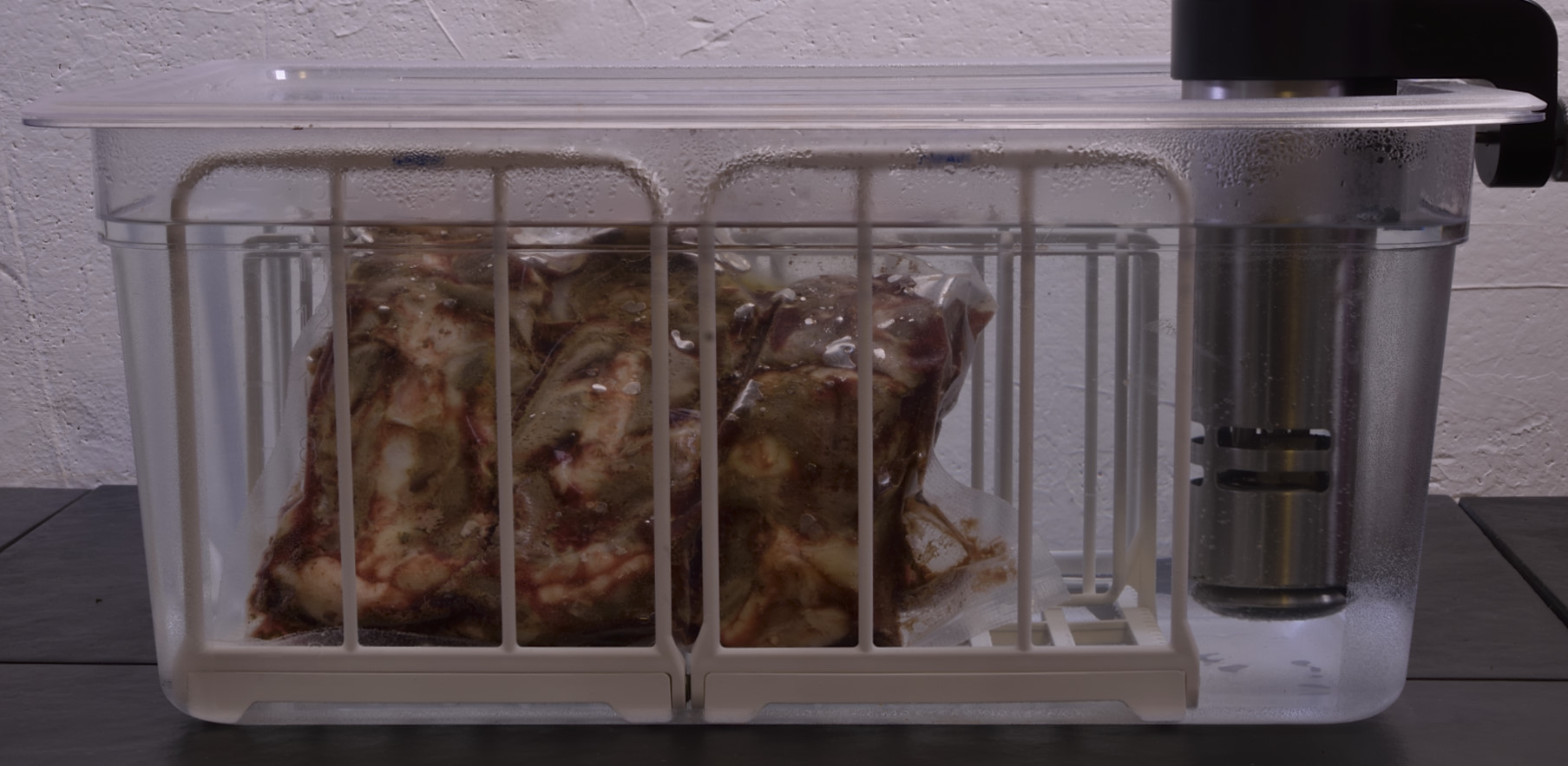
Submerge the refrigerated package of ribs in hot water for five minutes to fully melt the gel. You can use hot tap water (125 F/52 C) or the sous vide bath if you are processing something at the time. Cut open a corner of the bag and harvest the juices into a microwaveable container.
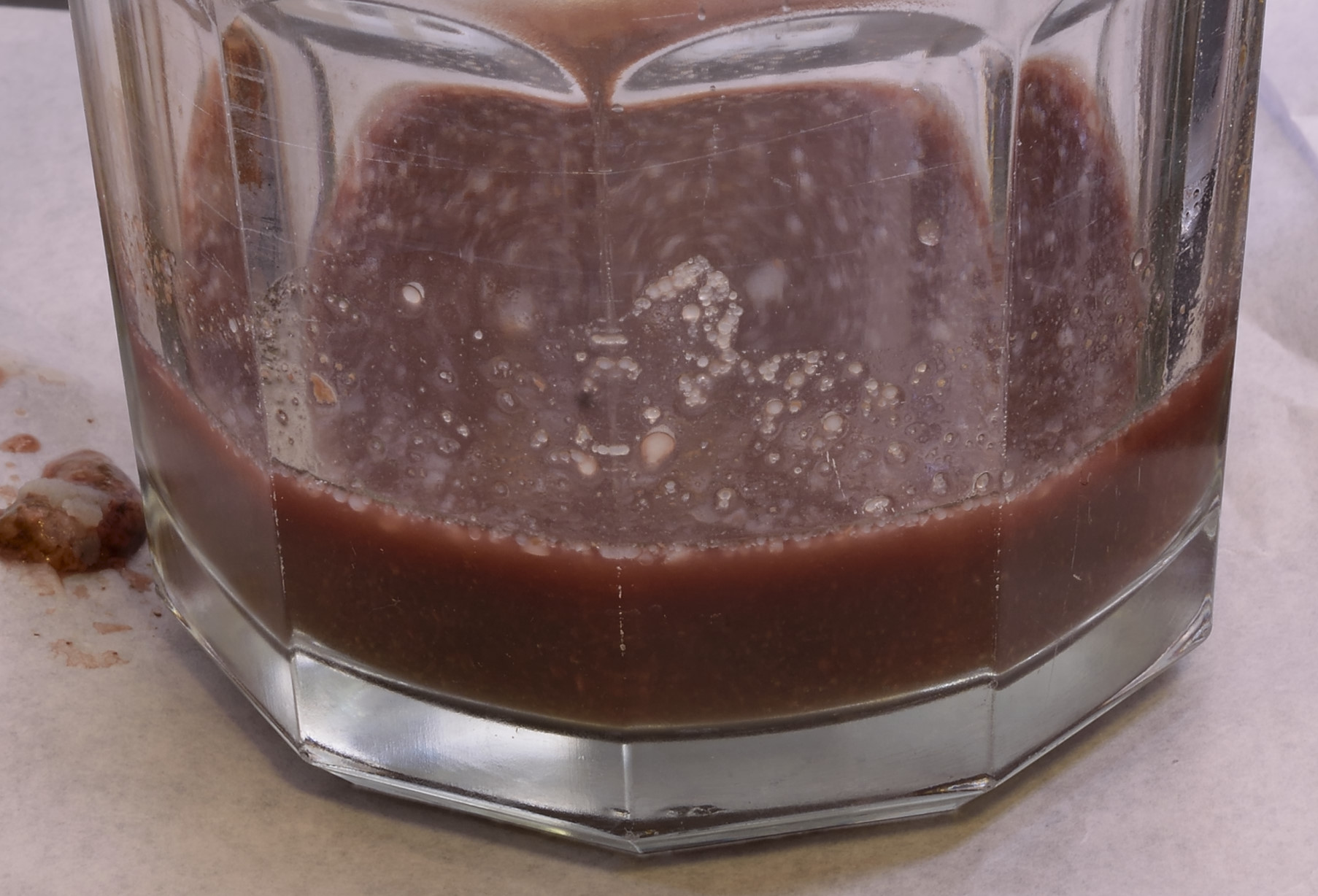
Process the reserved juices according to the method explained HERE.
Preheat the oven to 350 F/176 C.
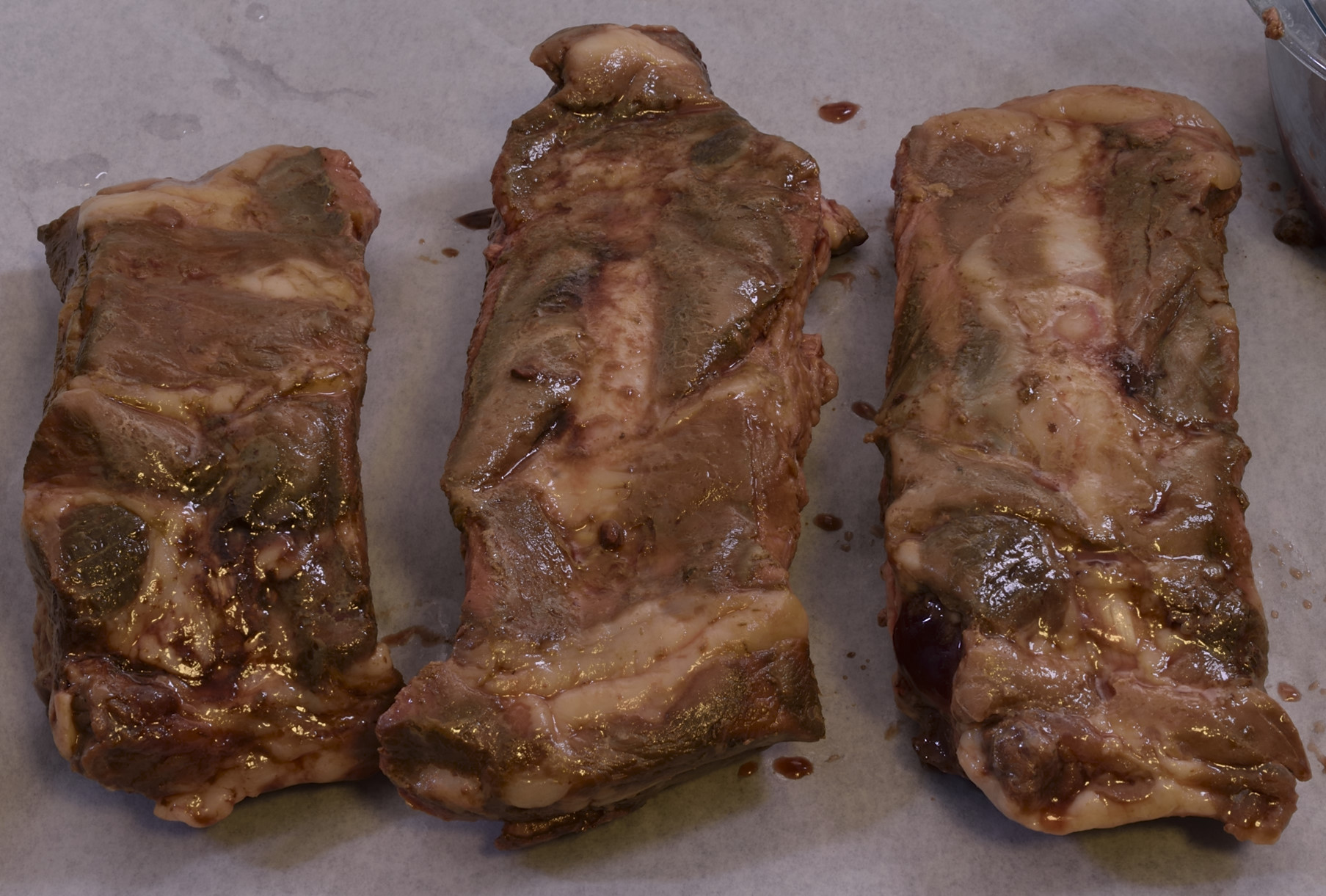
Spread the bones out on parchment.
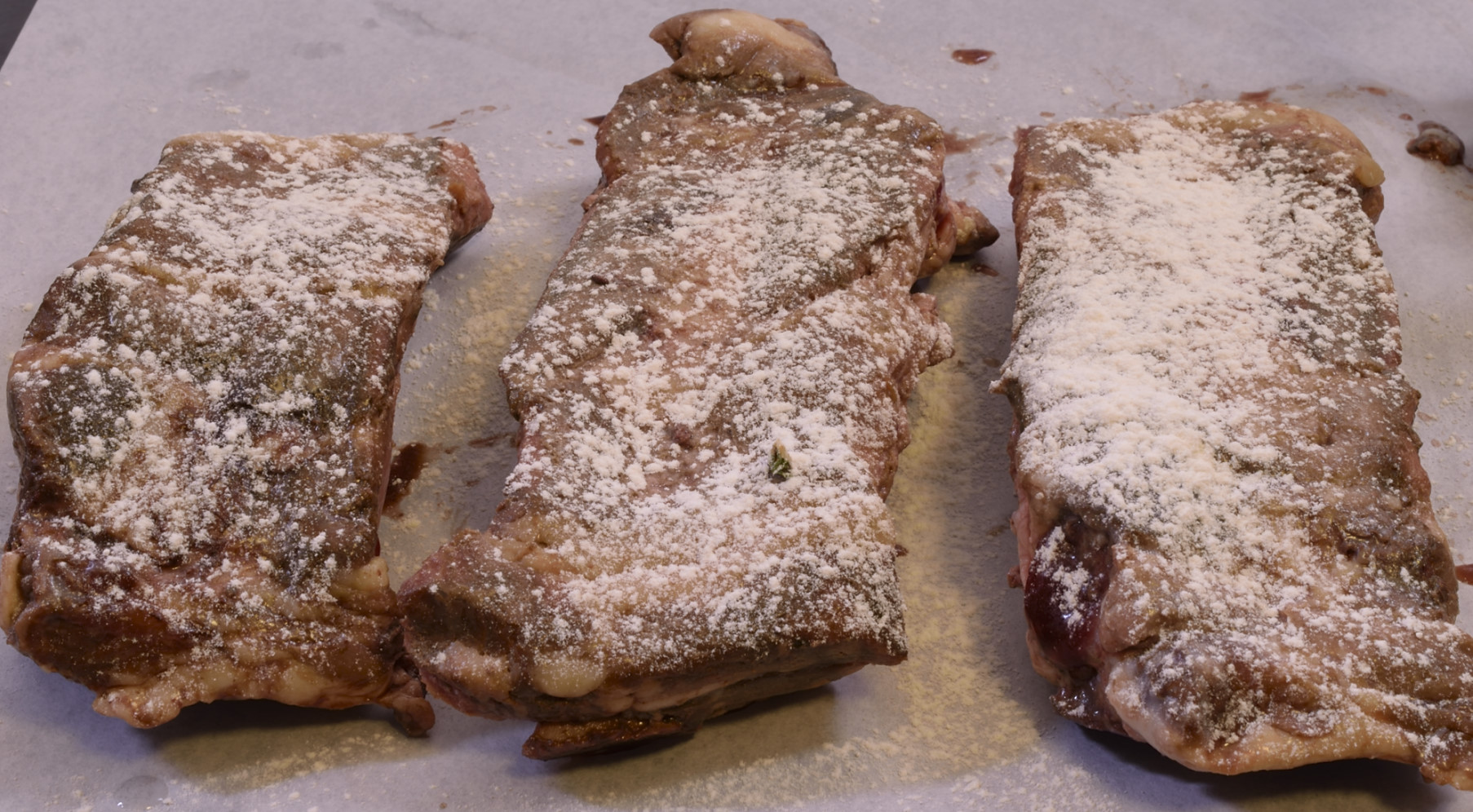
Dust lightly with flour–for celiac sufferers, this is not part of the essential chemistry. It just makes the surface nice and dry…
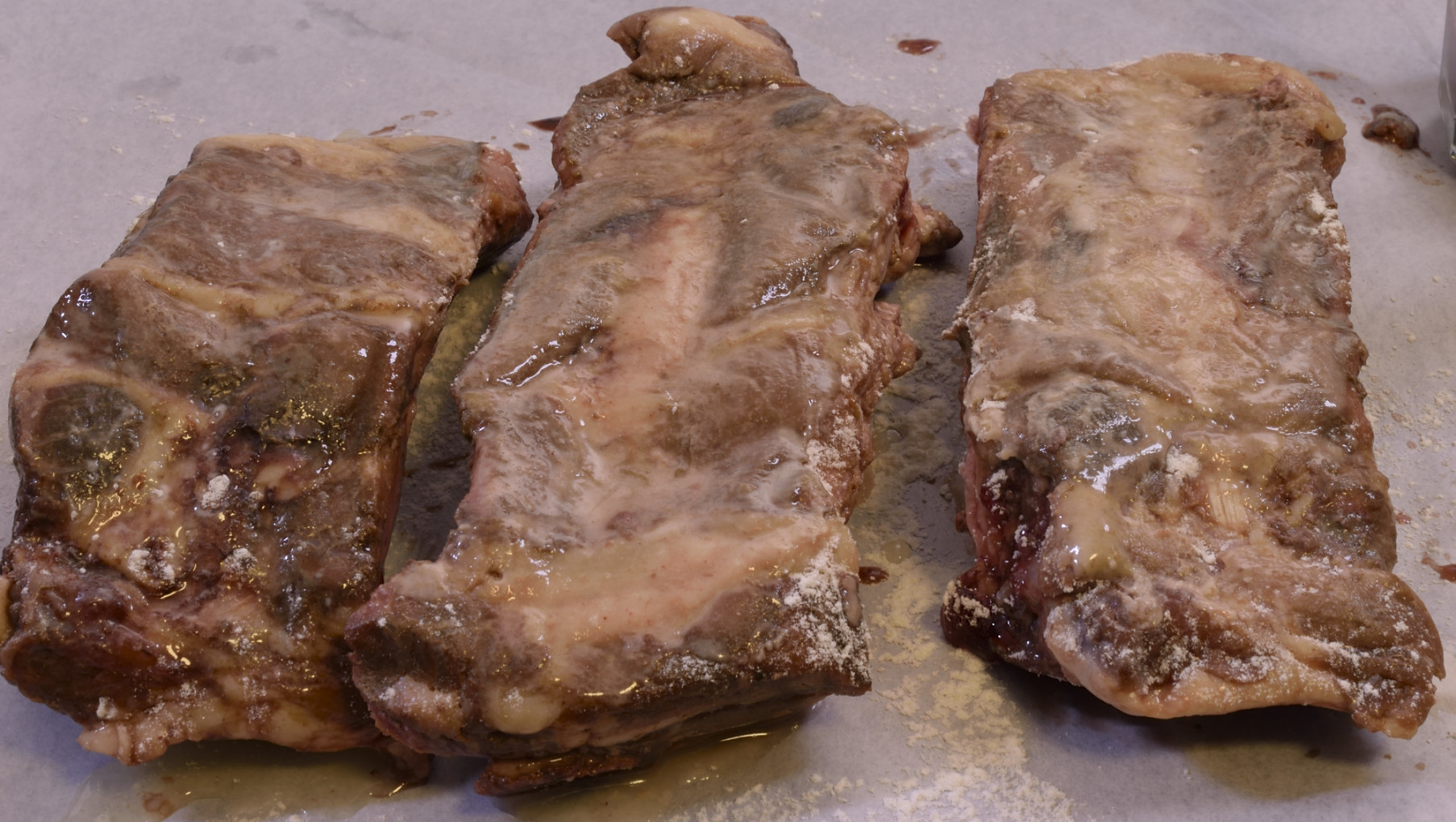
Mix one egg white with 1 oz water to thin it out a bit. Moisten the ribs with the solution to create a sticky surface.
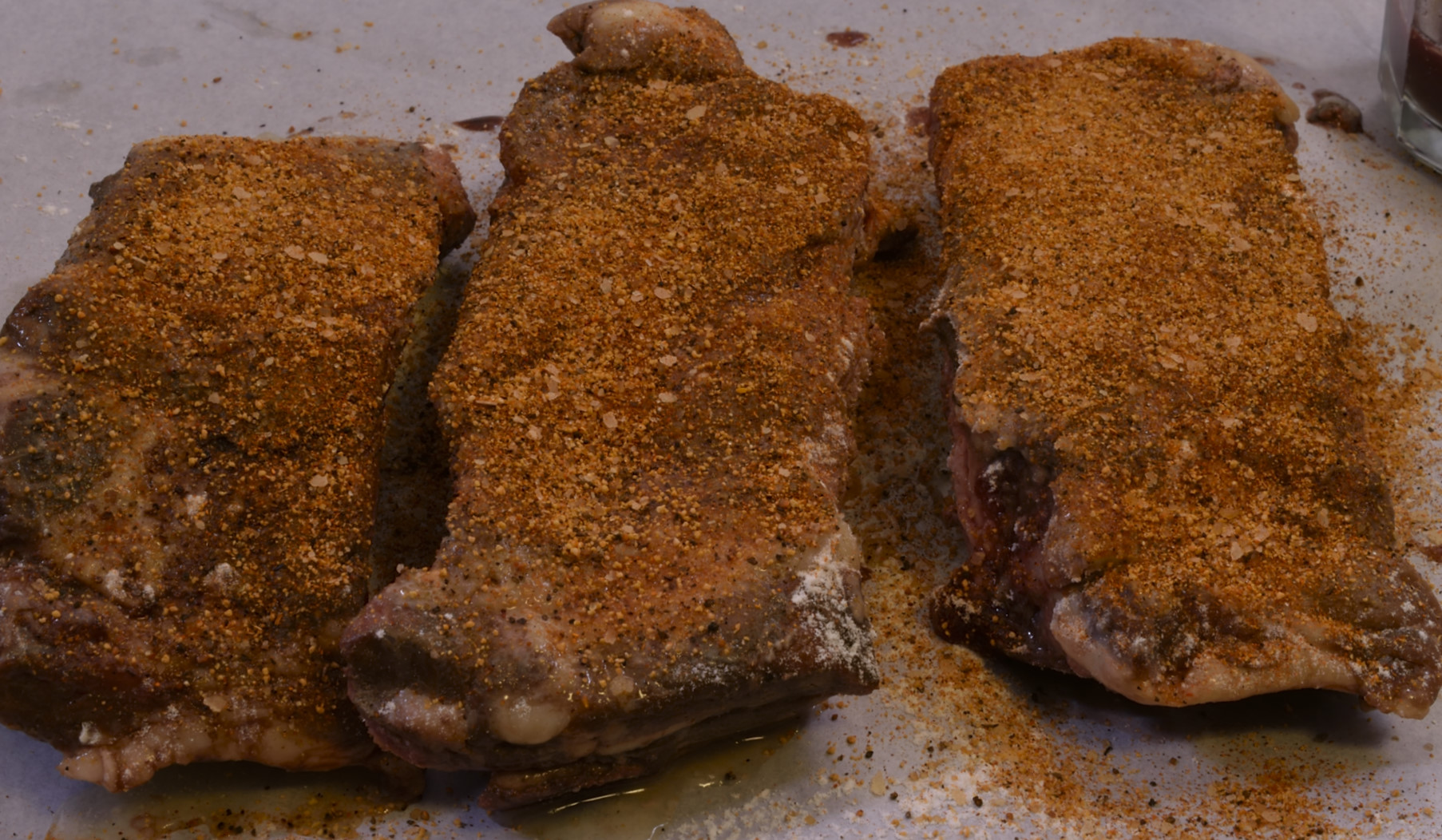
Coat with your favorite rub from HERE or your personal preference. This time I used a new product created by one of our members, Coy Goodnight. It’s good.
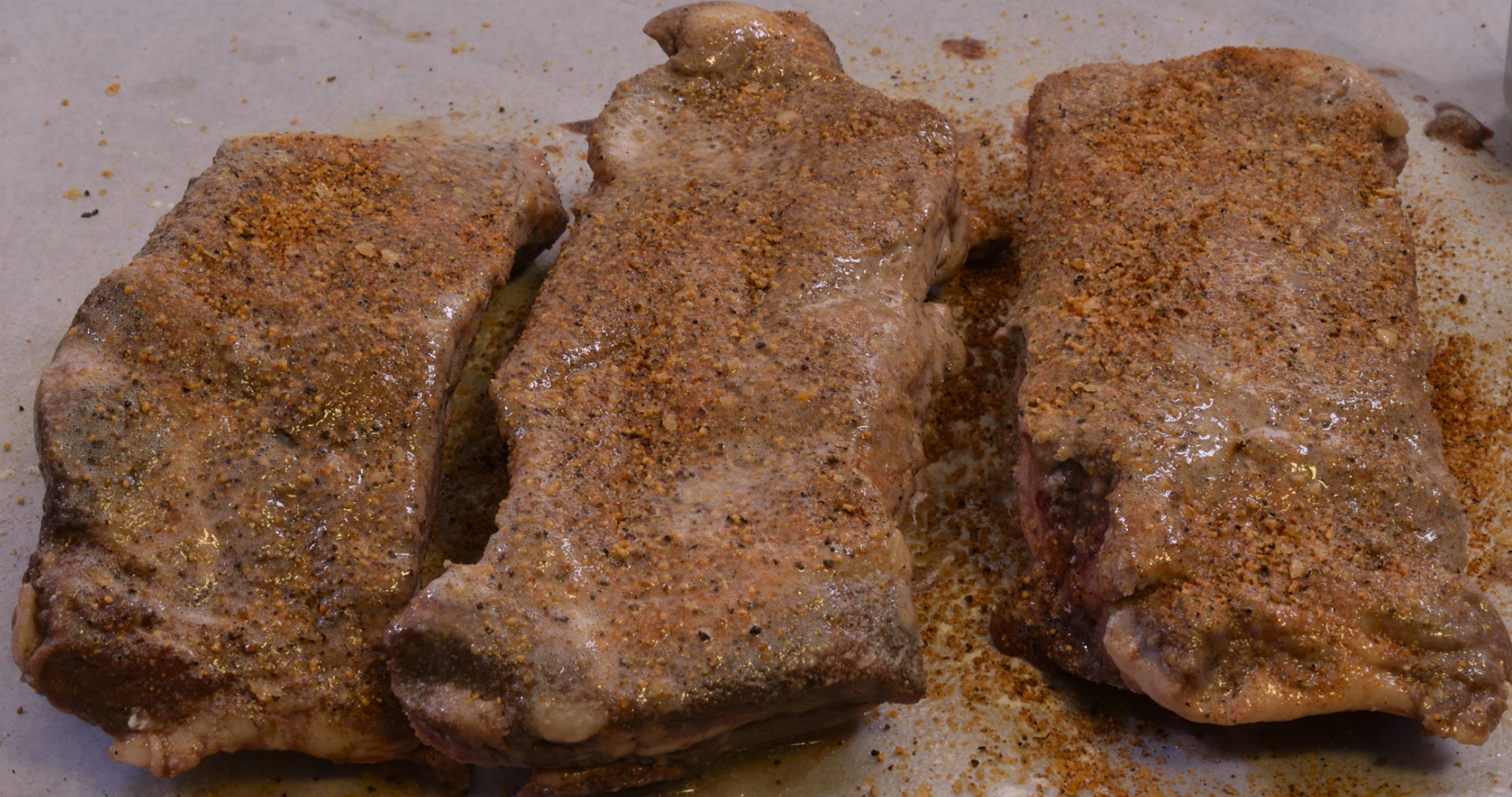
Spray or drizzle with vegetable oil. Stage the ribs onto a sheet pan and into the 350 F/176 C oven. Discard the parchment.
After about an hour, the ribs should be crispy, dark brown and the bones should be poking out. I basted with some of the Tonkatsu sauce that I made for the panko crusted pork cutlets and returned to the oven for 15 minutes. Parsley.
